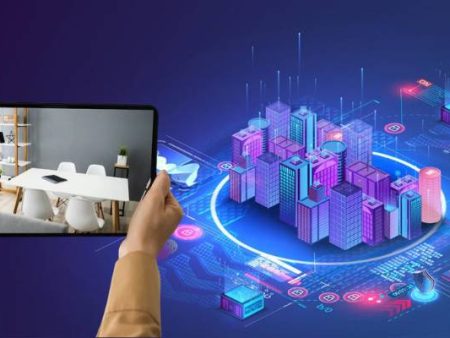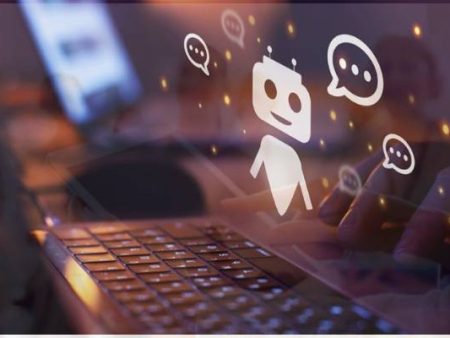When you think back to your school days, what sticks with you? For me, it wasn’t the textbooks or the endless bullet points on chalkboards—it was the rare moments when a teacher brought learning to life.
A science teacher once showed us a grainy old video of volcanoes erupting, and despite the low resolution and scratchy sound, it hit me harder than any paragraph in a book ever could.
Fast forward to today, and we’re standing on the edge of something far bigger. AI video for education is taking those once-rare “aha!” visuals and making them the norm. It’s not just about passive videos, though.
With artificial intelligence, lessons can be interactive, dynamic, and even personalized. The classroom of the future is already here—it just doesn’t always look like the classrooms we remember.
But is this a blessing, a burden, or a bit of both? That’s the conversation we need to have.
Why Education Needs AI Video Now
We know students are struggling with engagement. A Gallup survey from 2022 found that only 47% of U.S. students reported feeling engaged in school.
That’s less than half. And attention spans? They’re shrinking, partly thanks to our short-form content world of TikTok, Reels, and YouTube Shorts.
Educators face a real challenge: how do you compete with endless scrolling? Traditional lectures don’t cut it anymore. But interactive visuals powered by AI might.
AI video tools can break down complex concepts—like explaining black holes or the nervous system—into digestible animations.
They can add captions in real time, create avatars to deliver content in multiple languages, or even adapt the pacing based on student feedback. This isn’t a gimmick. It’s survival in a media-saturated learning environment.
From Chalkboards to AI-Generated Training Videos
Let’s be honest: slideshows and static videos are yesterday’s tools. The real leap is happening with AI-generated training videos, and not just in corporate settings.
Think of a history lesson on the Civil Rights Movement. Instead of a flat lecture, students could watch an AI-generated reenactment narrated by avatars in period settings.
Or imagine a biology class where a virtual heart beats in sync with the teacher’s explanation, and students can pause, zoom in, or even “ask” the video to clarify terms.
This isn’t science fiction. Tools like Synthesia, DeepBrain AI, and Pictory are already helping educators create such content. And here’s the kicker—it doesn’t require Hollywood budgets.
A single teacher with access to these platforms can produce content that rivals what we once needed full production teams for.
The Human Reaction: Awe and Hesitation
I’ve spoken with teachers who’ve dipped their toes into AI video. One told me, “It’s like suddenly having a co-teacher who’s available 24/7.” Another admitted, “It feels weird, like I’m outsourcing part of my personality.”
That hesitation matters. Education is deeply personal. Students remember the quirks of their favorite teachers—their enthusiasm, their humor, even their flaws. If AI starts replacing too much of that, we risk losing the human heart of teaching.
Personally, I don’t think AI should replace teachers. It should empower them. The magic comes when AI takes care of the repetitive tasks and allows teachers to do what only they can: inspire, empathize, and connect.
The Technology Powering Interactive Learning
Let’s break down how this all works in practice.
- Adaptive Video Content
AI can analyze student responses in real time. If learners are struggling with a concept, the video can branch into simpler explanations or provide more examples. - Natural Language Processing (NLP)
Students can “talk” to the video, asking it questions mid-lesson. Imagine pausing a geometry video and saying, “Wait, can you show me another way to solve that?” - Avatars and Personalization
Students learn best when they feel connected. AI avatars—some modeled on real teachers—can be customized to deliver lessons with warmth, humor, or authority, depending on the context. - Accessibility Features
Real-time captions, translations, and even sign-language avatars make learning more inclusive than ever before.
The goal isn’t to dazzle students with technology—it’s to meet them where they are and make content stick.
Beyond the Classroom: Global Implications
It’s easy to focus on U.S. schools, but the real power of AI video for education lies in global reach. In regions where teacher shortages are severe, AI avatars could deliver consistent, high-quality lessons.
According to UNESCO, 69 million teachers will need to be recruited worldwide by 2030 to achieve universal education goals. That’s an overwhelming number. AI video won’t solve the shortage entirely, but it can help fill critical gaps, especially in rural or underserved areas.
Imagine a student in a remote village having access to the same interactive math tutor as a kid in New York City. That’s the kind of equity AI can bring if we implement it responsibly.
How AI Is Reshaping News Broadcasting—A Parallel to Education
It’s interesting to compare education to another industry: media. Right now, how AI is reshaping news broadcasting offers a glimpse into what classrooms might look like in a decade.
In countries like South Korea and China, AI anchors already deliver the news around the clock. They’re consistent, polished, and multilingual. The question isn’t whether audiences can accept them—it’s whether they want to.
Education faces the same crossroad. Will students embrace AI instructors, or will they rebel against them? My guess: they’ll accept them as long as they feel authentic and useful. Just like with news anchors, what matters is trust.
Emotional Nuance: Can AI Capture It?
This is where things get tricky. AI avatars are great at explaining quadratic equations or reciting dates. But can they inspire the same goosebumps as a teacher who shares a personal story about struggling through school? Probably not—at least not yet.
Humans bring imperfection, and imperfection makes us relatable. I remember a teacher once crying during a lesson about 9/11 because she had lost a family member. That moment shaped how I understood history—not just as facts, but as lived experience.
AI can’t replicate that emotional depth. And maybe that’s okay. Maybe the point isn’t to replace emotional nuance but to free teachers to spend more time being human.
Video Game Cutscenes Powered by AI—Revol: Lessons for Education
Oddly enough, one of the most exciting test cases for AI video isn’t in classrooms or boardrooms—it’s in gaming. We’re seeing video game cutscenes powered by AI—Revol and similar systems that generate dynamic, personalized storylines.
Why does this matter for education? Because gaming is one of the best models we have for interactive learning. If a student can “play” through a physics problem the way a gamer plays through a quest, they’re more likely to retain the lesson.
Gamification isn’t new, but AI makes it scalable. Instead of canned responses, lessons can adapt in real time, offering multiple pathways to understanding. It’s the difference between memorizing facts and living through them.
The Data Backing the Shift
A few statistics underline just how fast this is moving:
- The global market for AI in education is expected to reach $30 billion by 2032, up from $2 billion in 2022 (Precedence Research).
- A McKinsey report found that AI-powered personalization can improve student performance by up to 30% when compared with traditional methods.
- In a survey of U.S. educators, 60% said they believe AI will significantly impact their classrooms within the next five years (EdWeek Research Center).
These aren’t distant projections—they’re warnings and opportunities rolled into one.
The Ethical Dilemma
We can’t have this conversation without acknowledging the risks.
- Bias in Content: If the data training the AI is biased, the lessons will be too.
- Data Privacy: Students’ interactions with AI need to be safeguarded.
- Over-Reliance on Tech: What happens if schools start leaning too heavily on AI and neglect the human side of learning?
The solution isn’t to avoid AI but to implement it with strong ethical frameworks. Teachers, parents, and students all need a seat at the table.
Practical Steps for Educators
If you’re a teacher curious about dipping into AI video, here are a few practical tips:
- Start small. Try adding AI-generated visuals to a single lesson before overhauling your entire curriculum.
- Use AI for repetitive topics (like vocabulary drills) so you can spend more energy on creative discussions.
- Be transparent with your students. Let them know when content is AI-generated and why.
- Keep the feedback loop open. Ask students what works and what doesn’t.
AI is a tool, not a replacement. And like any tool, it’s only as good as the hands guiding it.
My Closing Thoughts
When I think about AI video for education, I don’t picture a dystopian classroom filled with glowing avatars and absent teachers.
I picture a teacher walking into a room where the boring stuff is already handled—where an AI-generated video has explained the basics, leaving them free to spark debate, tell stories, and connect with students.
That’s the balance we should be aiming for: efficiency without losing empathy, scale without losing soul.
The danger isn’t that AI will take over classrooms. The danger is that we’ll let it replace the very things that make education meaningful: human connection, vulnerability, and shared curiosity.
But if we use it right? The possibilities are thrilling. A world where every student, no matter where they live, can access engaging, interactive lessons. A world where teachers are less burnt out. A world where learning feels alive again.
And that, to me, is a future worth striving for.


